Hans-Hermann Herb - 2012
Hans-Hermann Herb - 2012
Details
Details
Overview
Overview
Shipping important note
Shipping important note
Delivery times are typically reliable and most instruments arrive within the estimated timeframe.
Should any unexpected delay occur, our team will keep you informed and provide support at every step. For all shipping details and exceptions, please see our Shipping Policy.
Details about GPSR
Details about GPSR
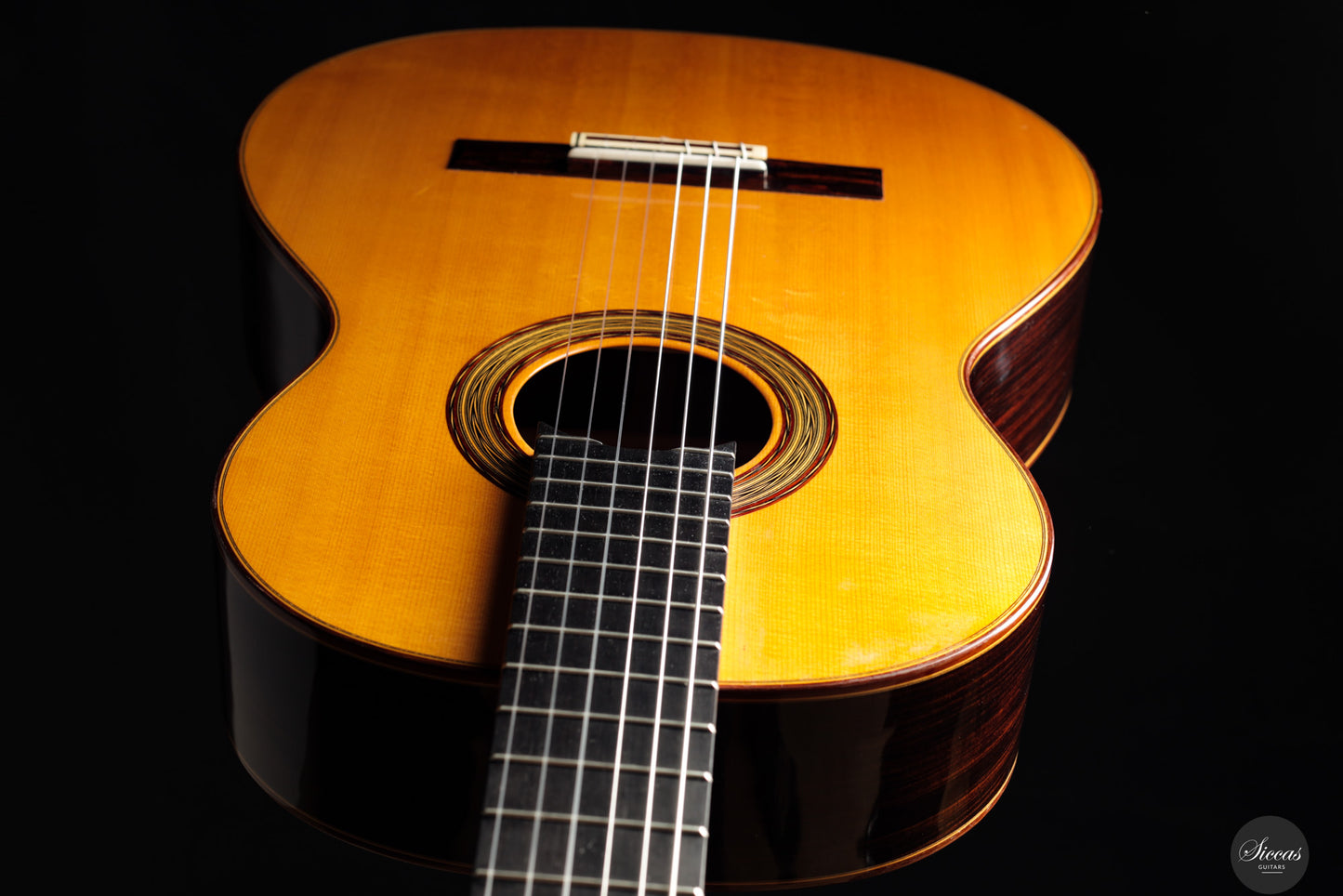
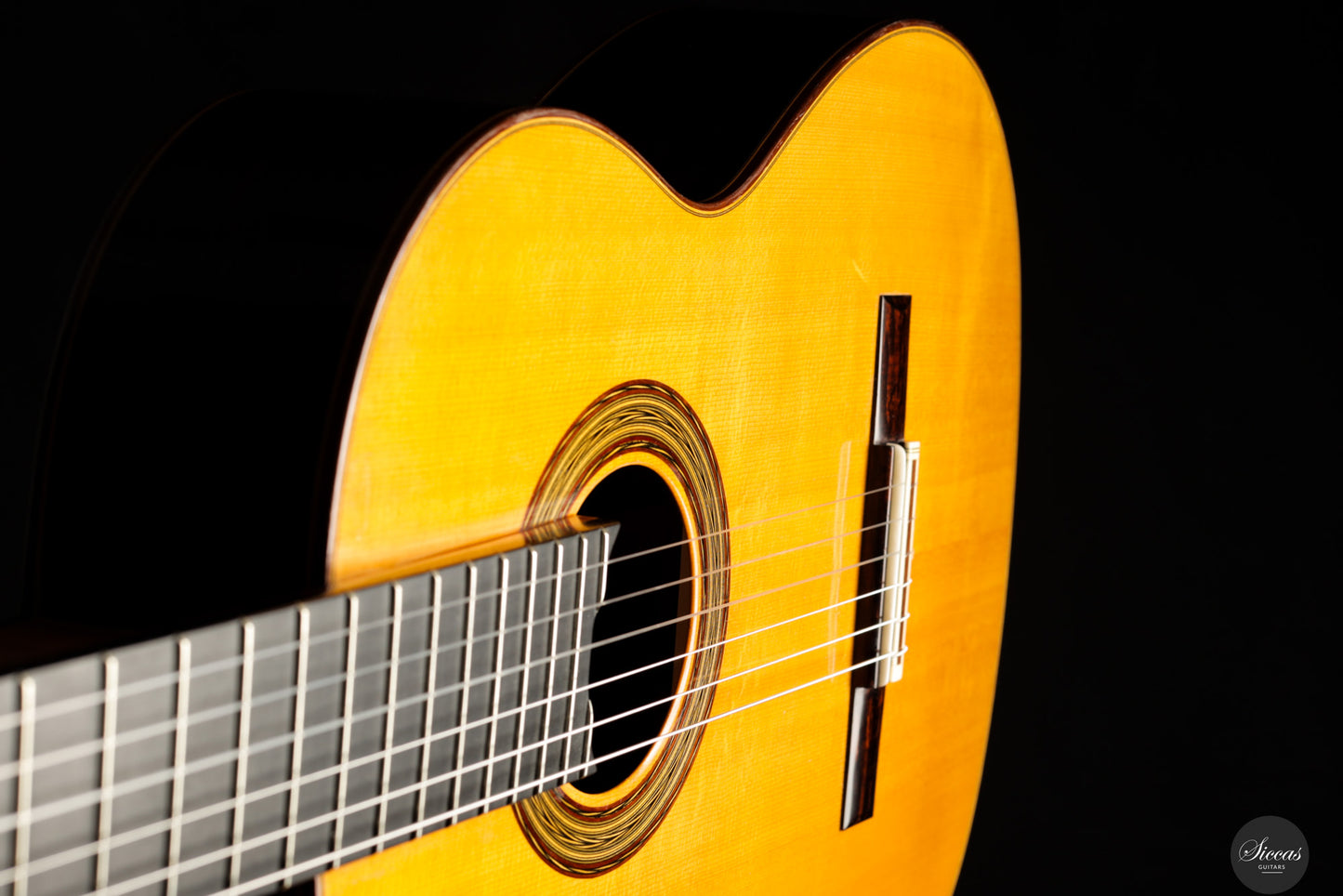
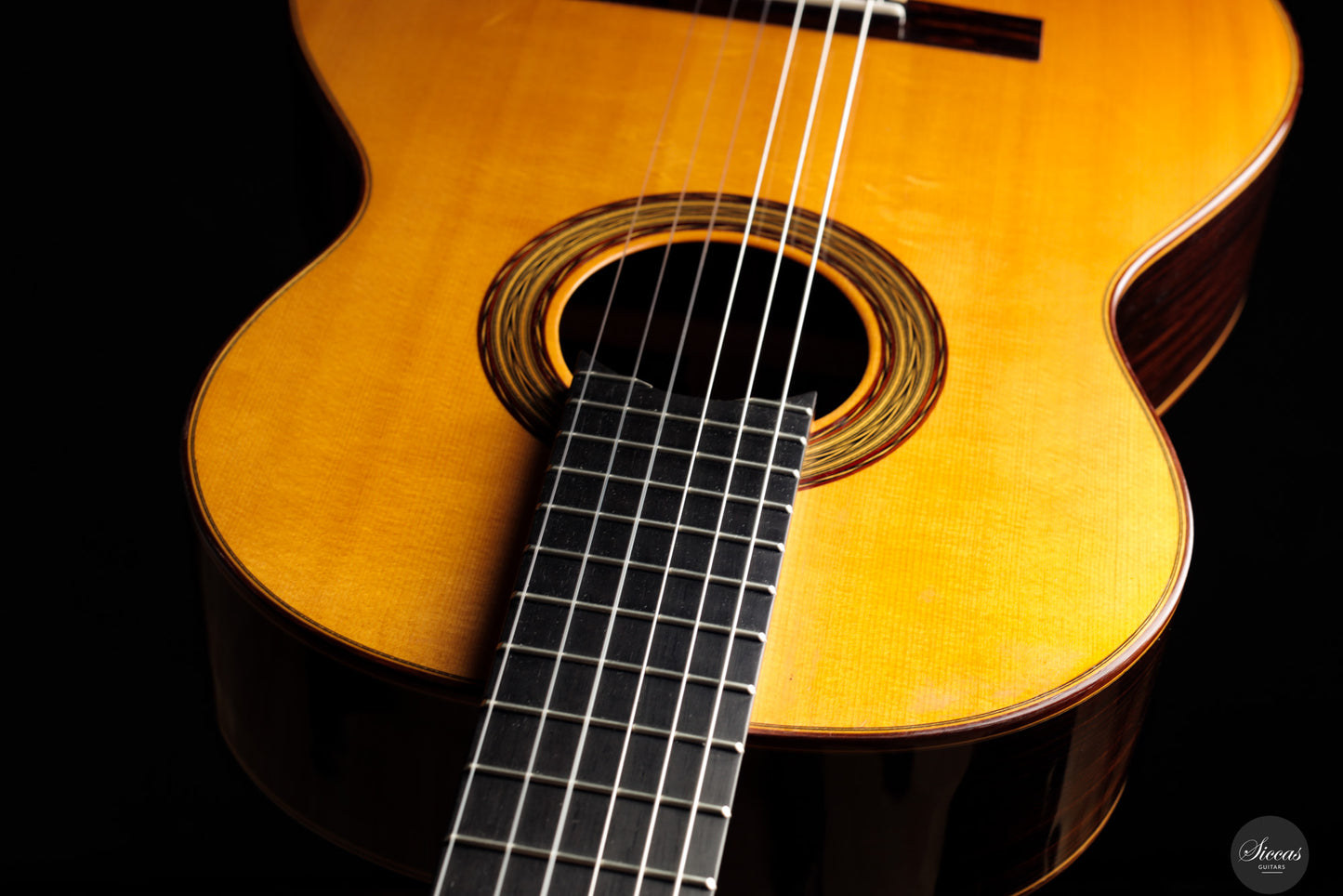
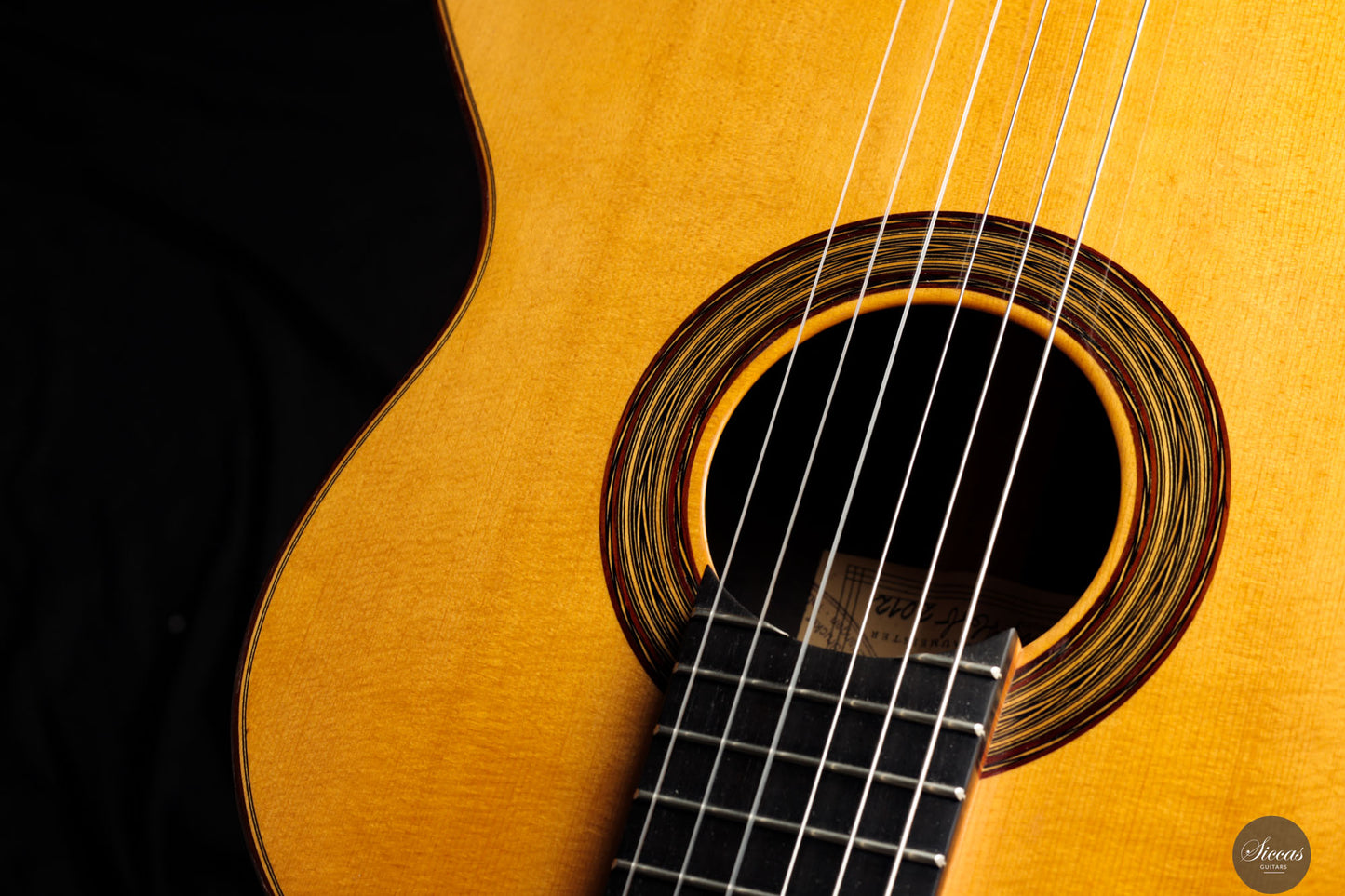
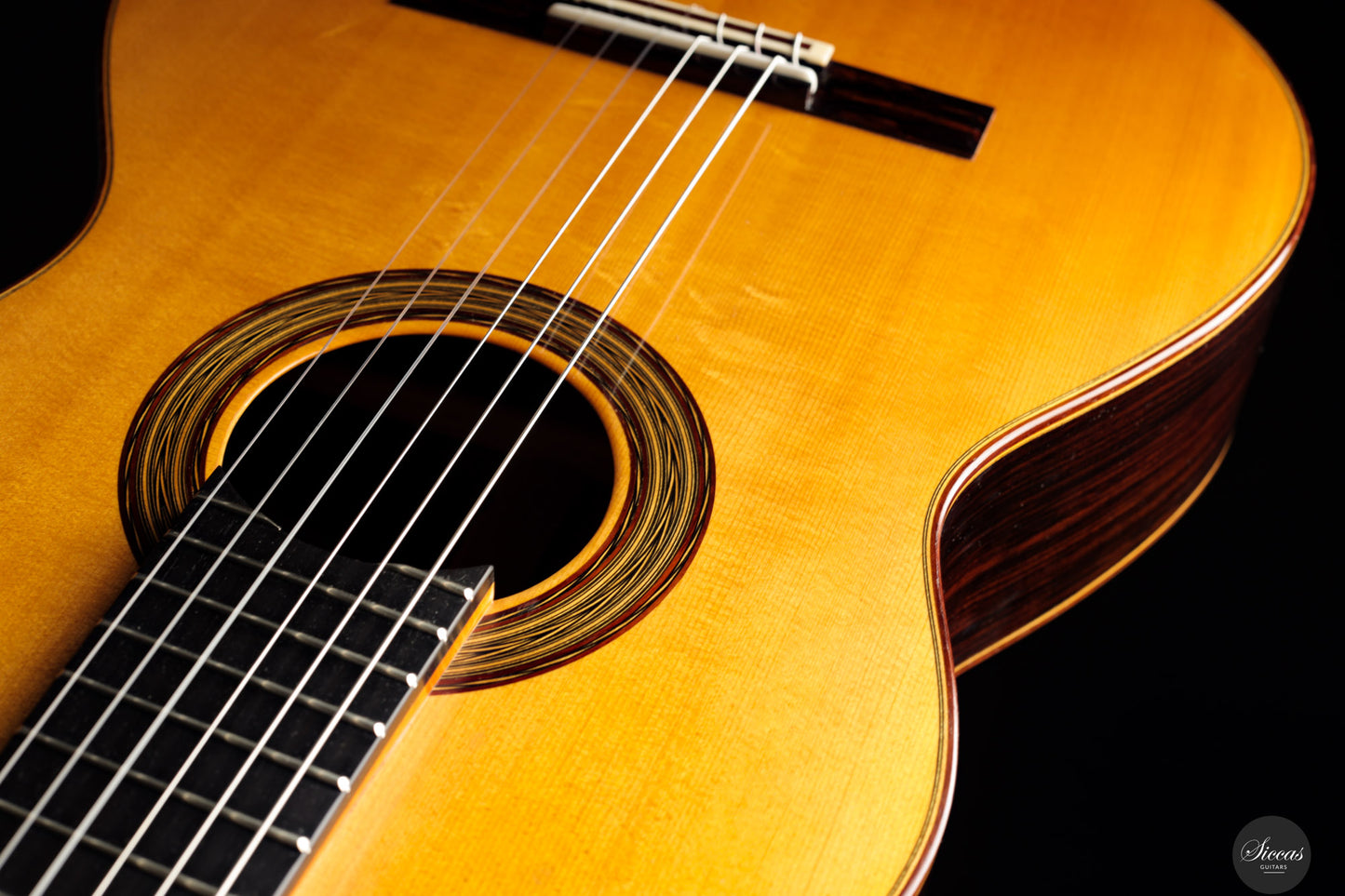
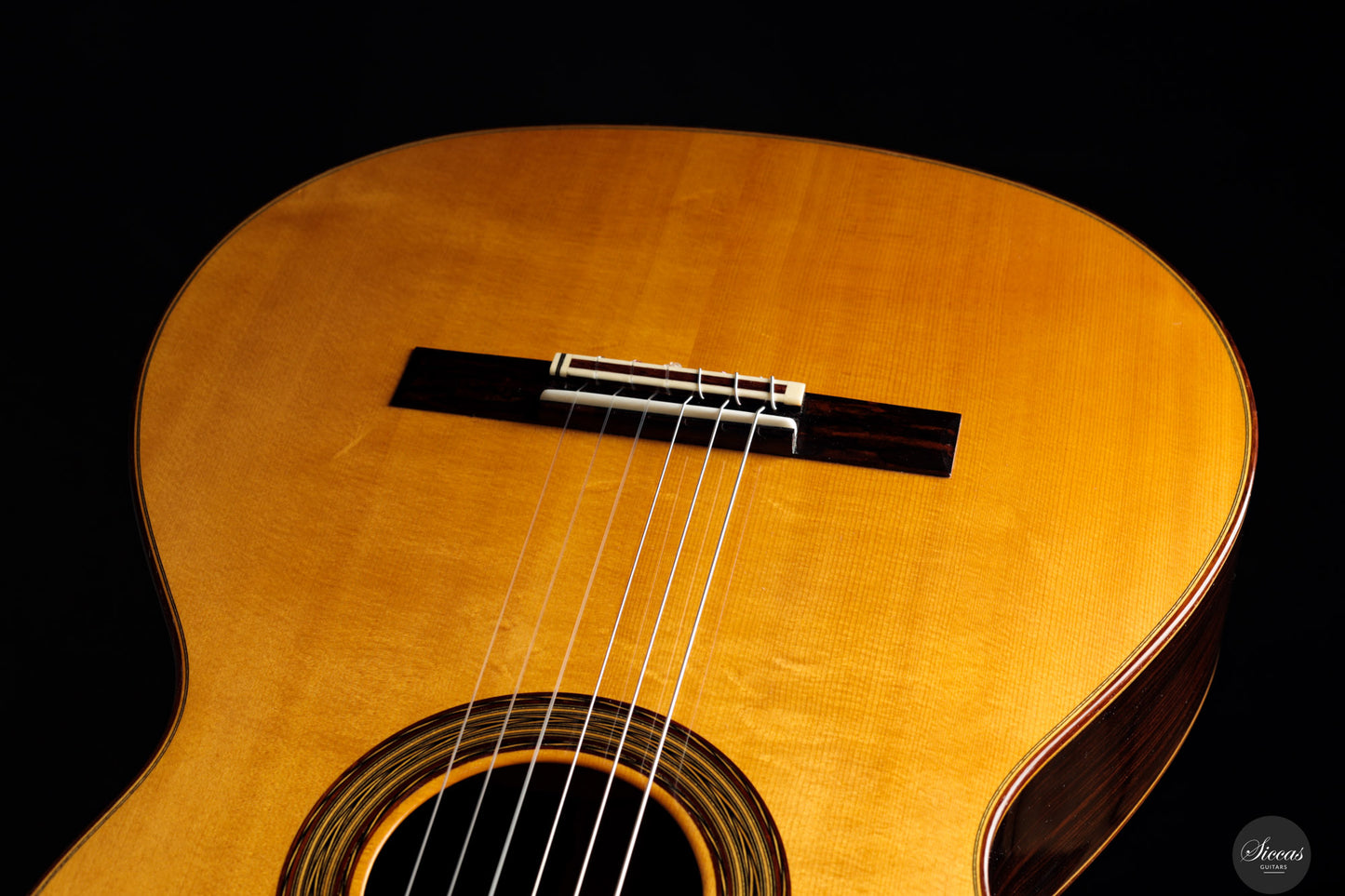
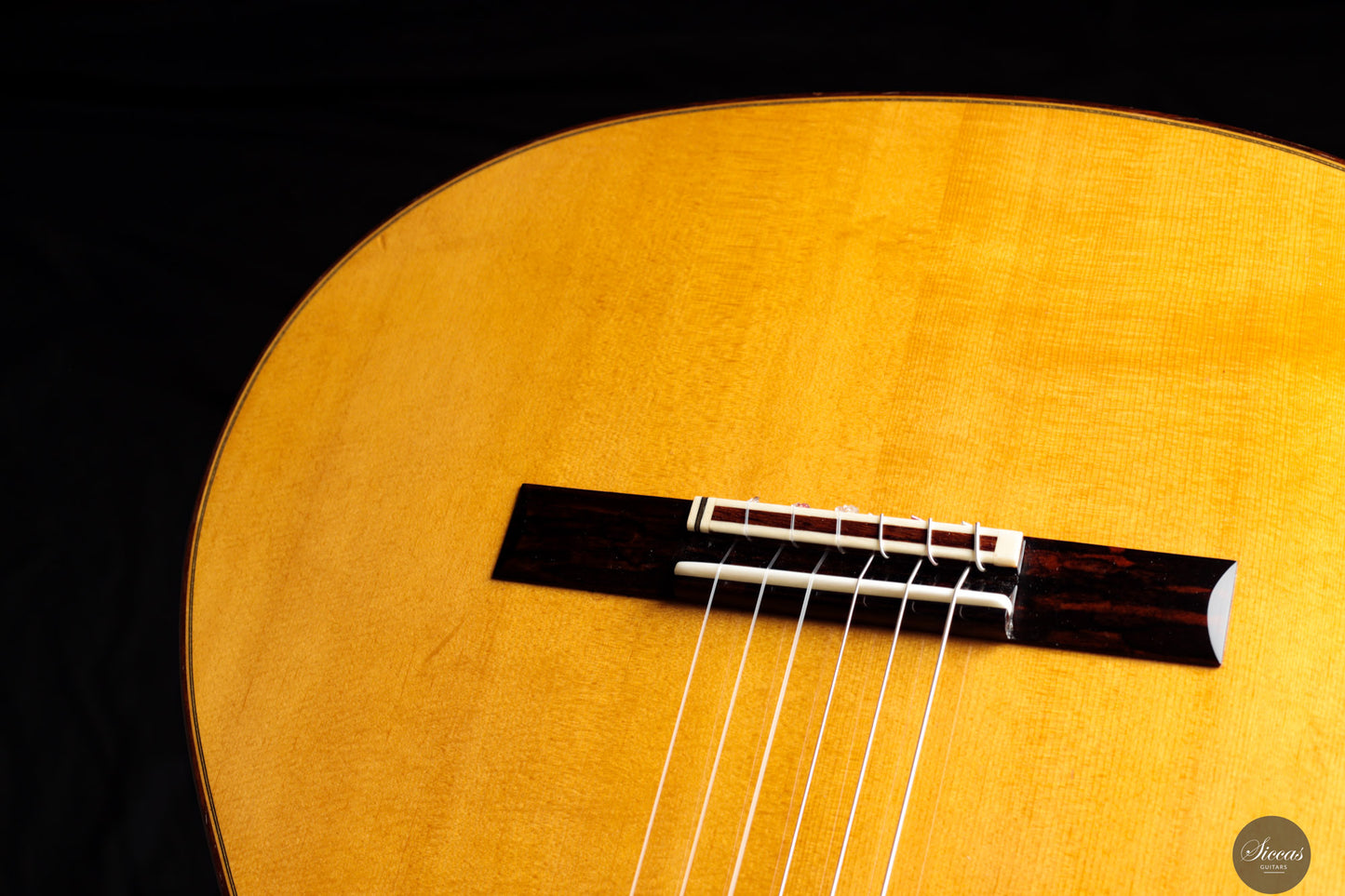
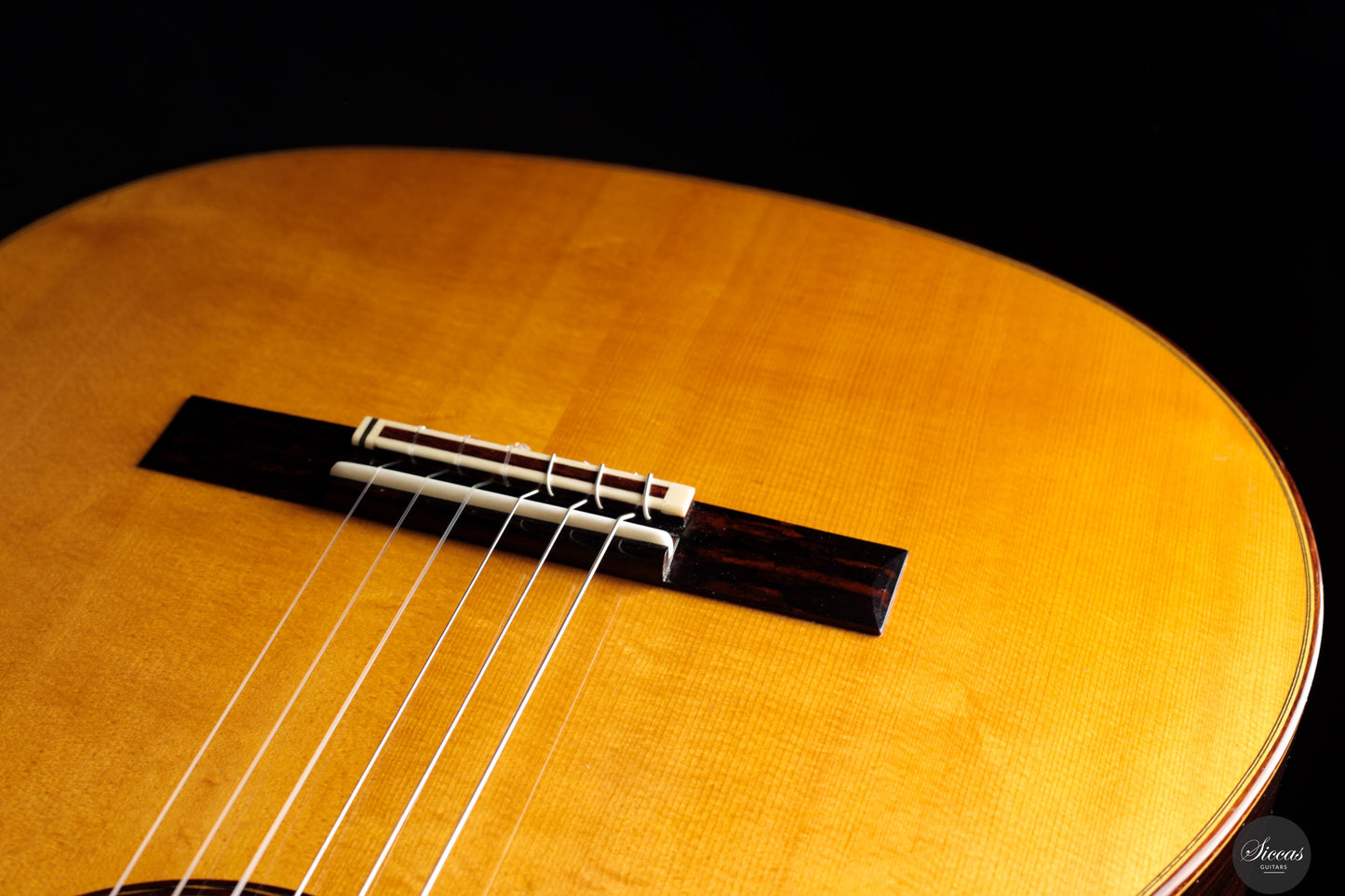
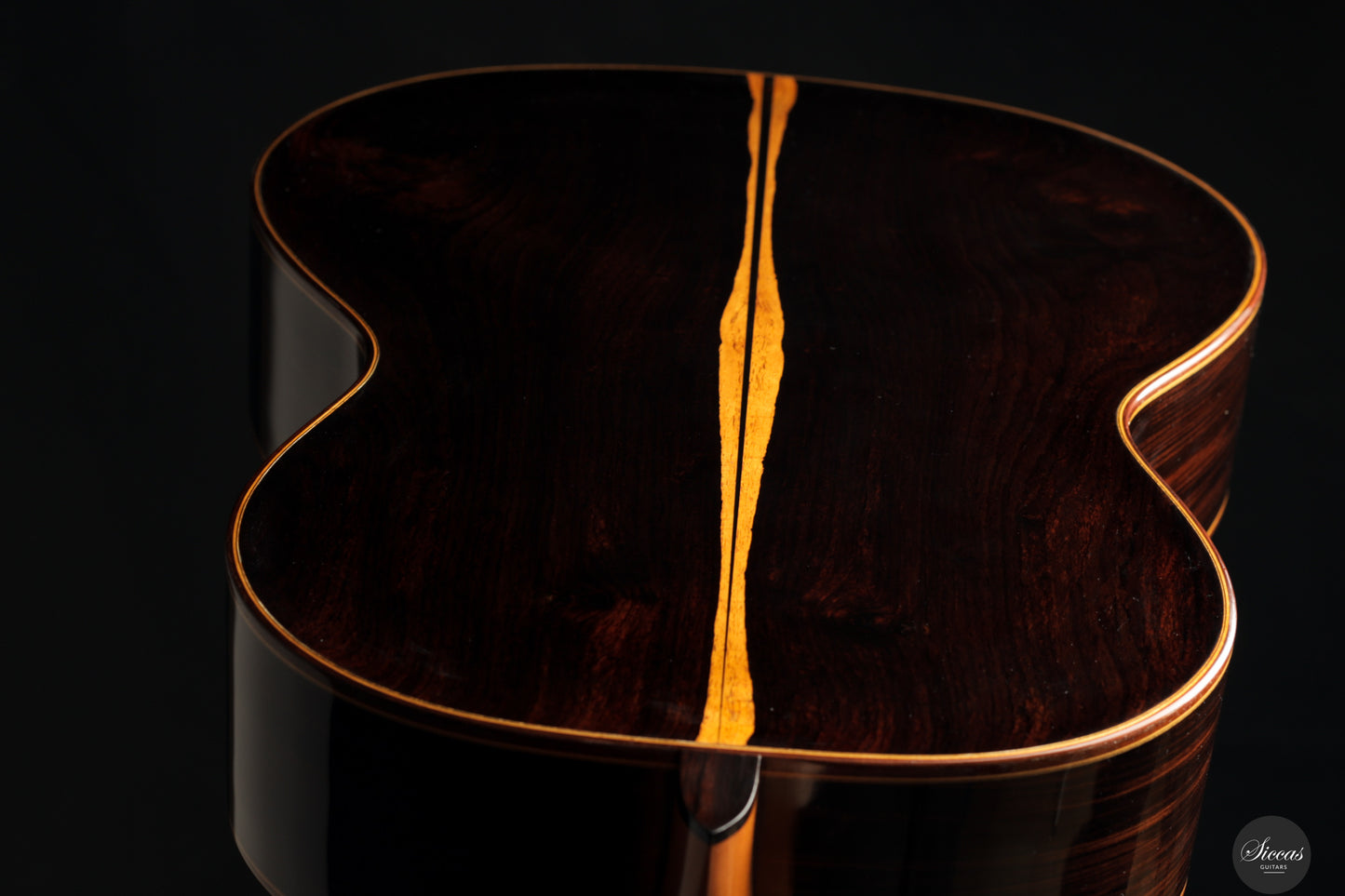
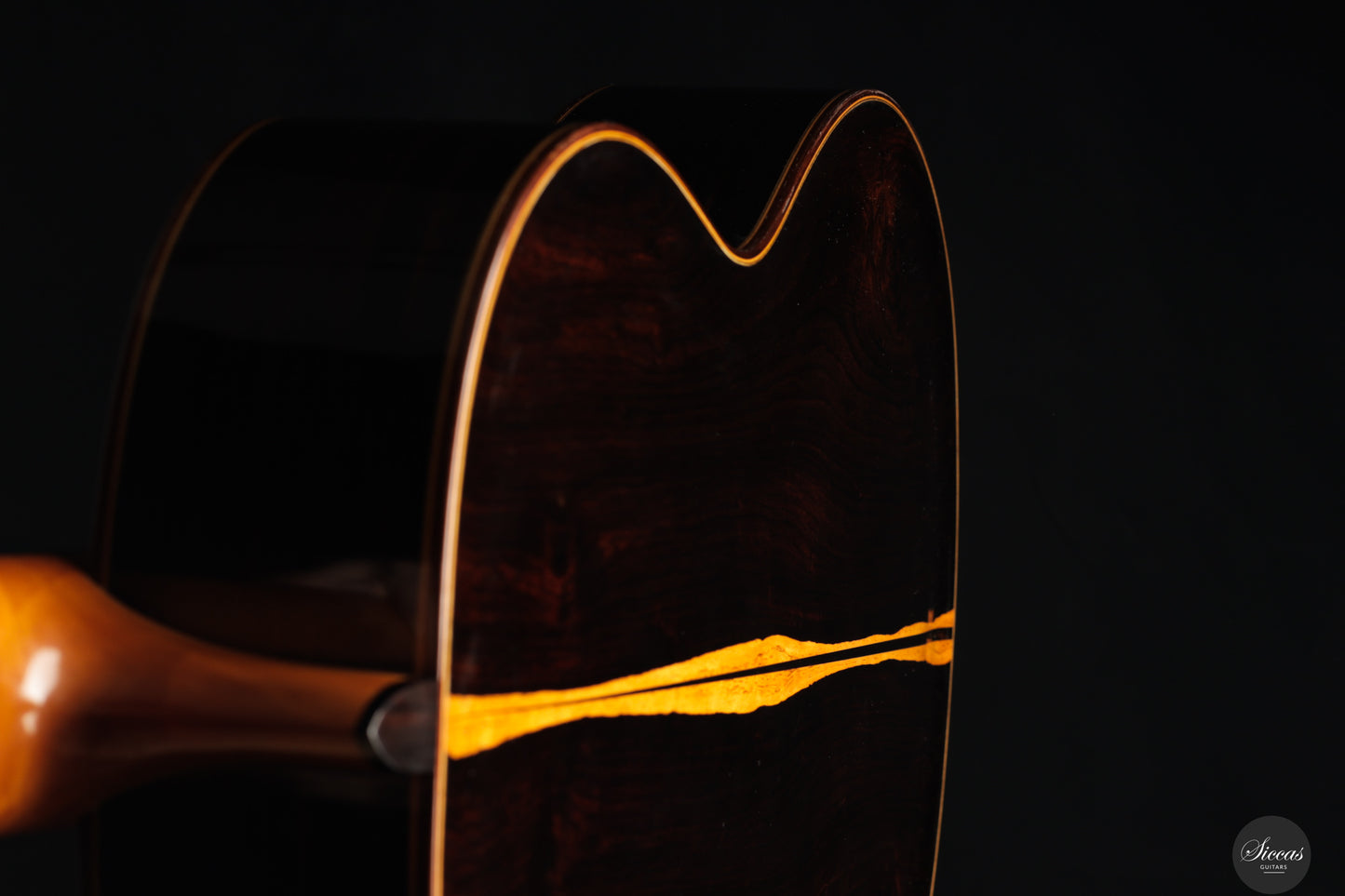
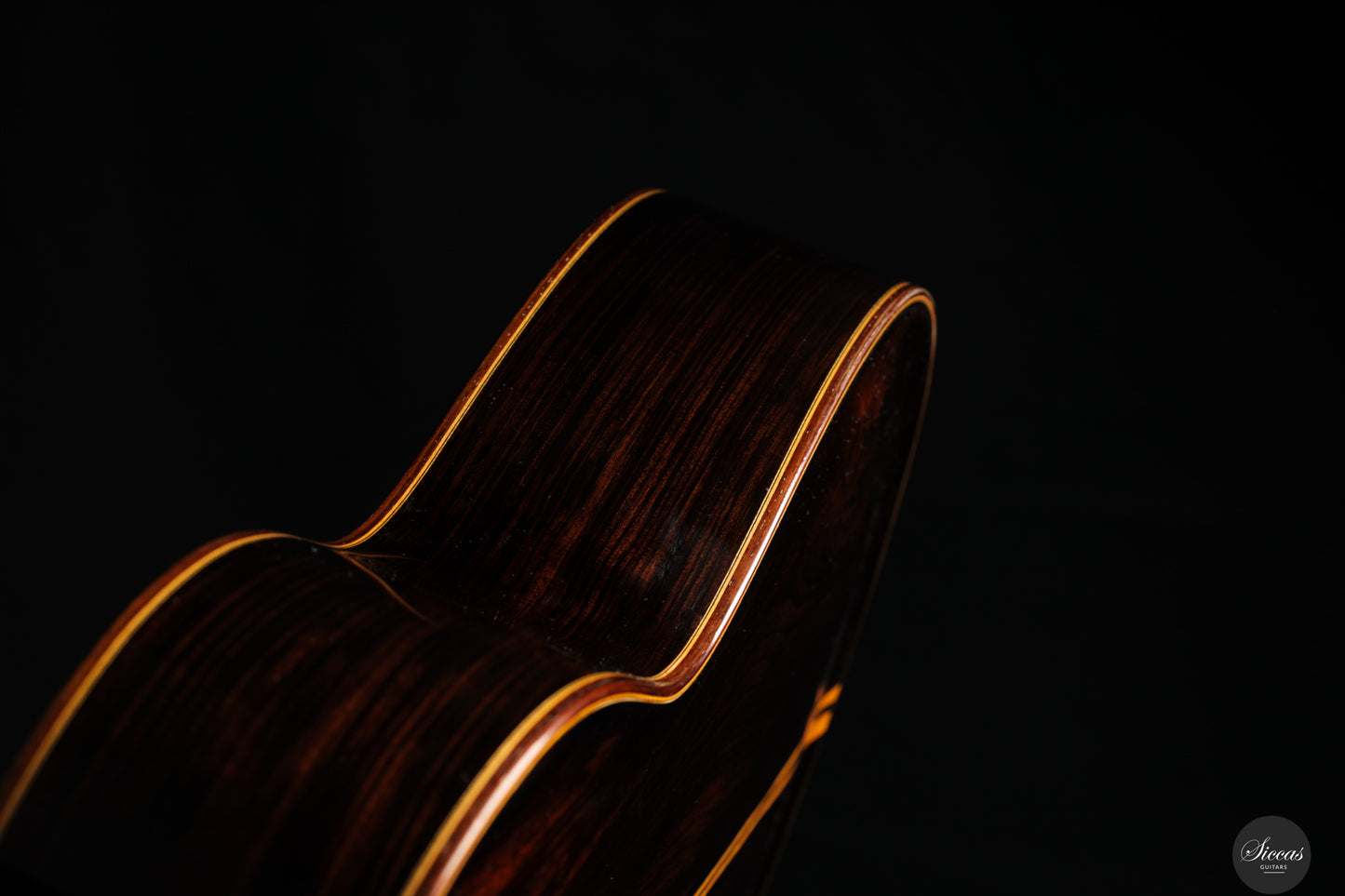
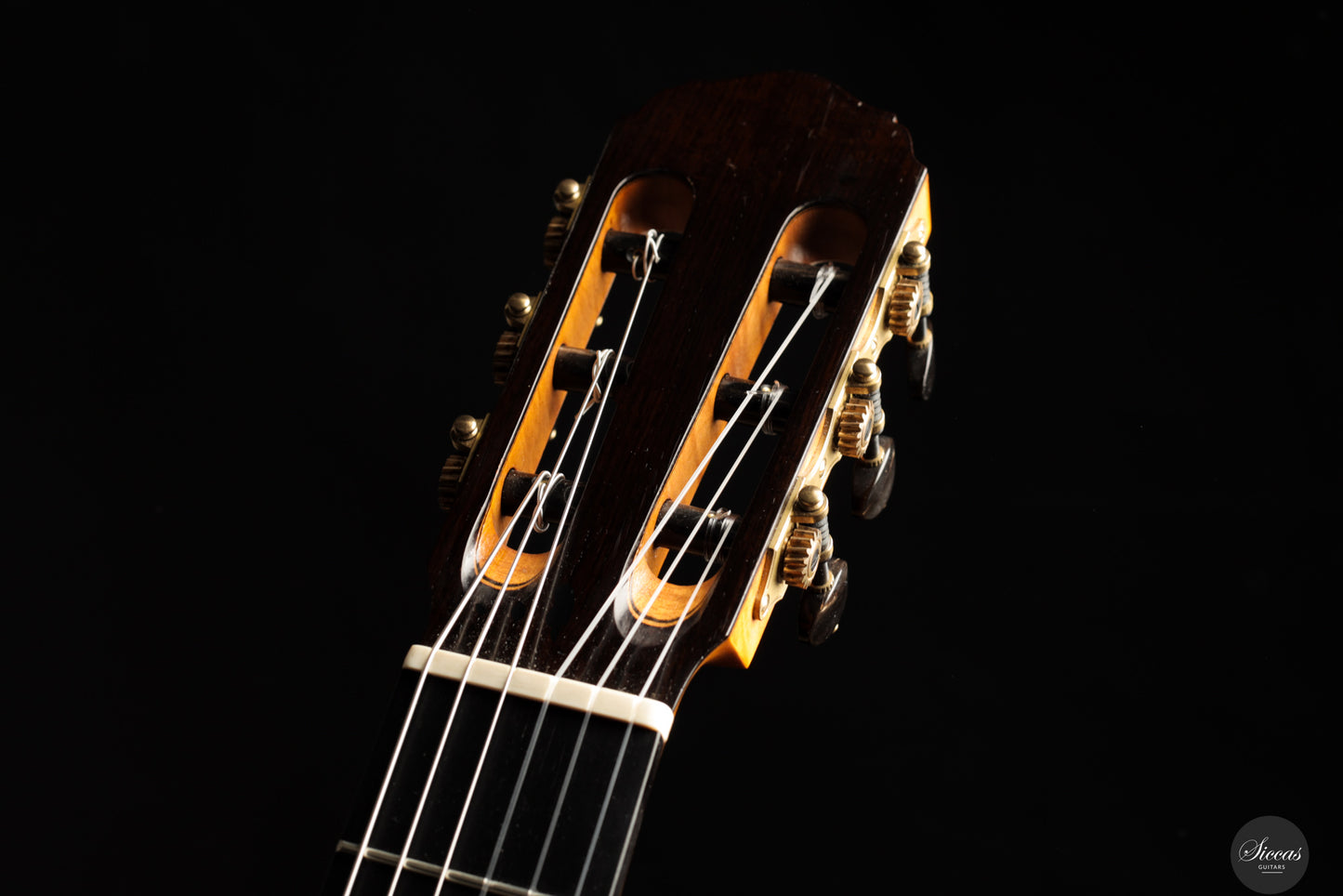
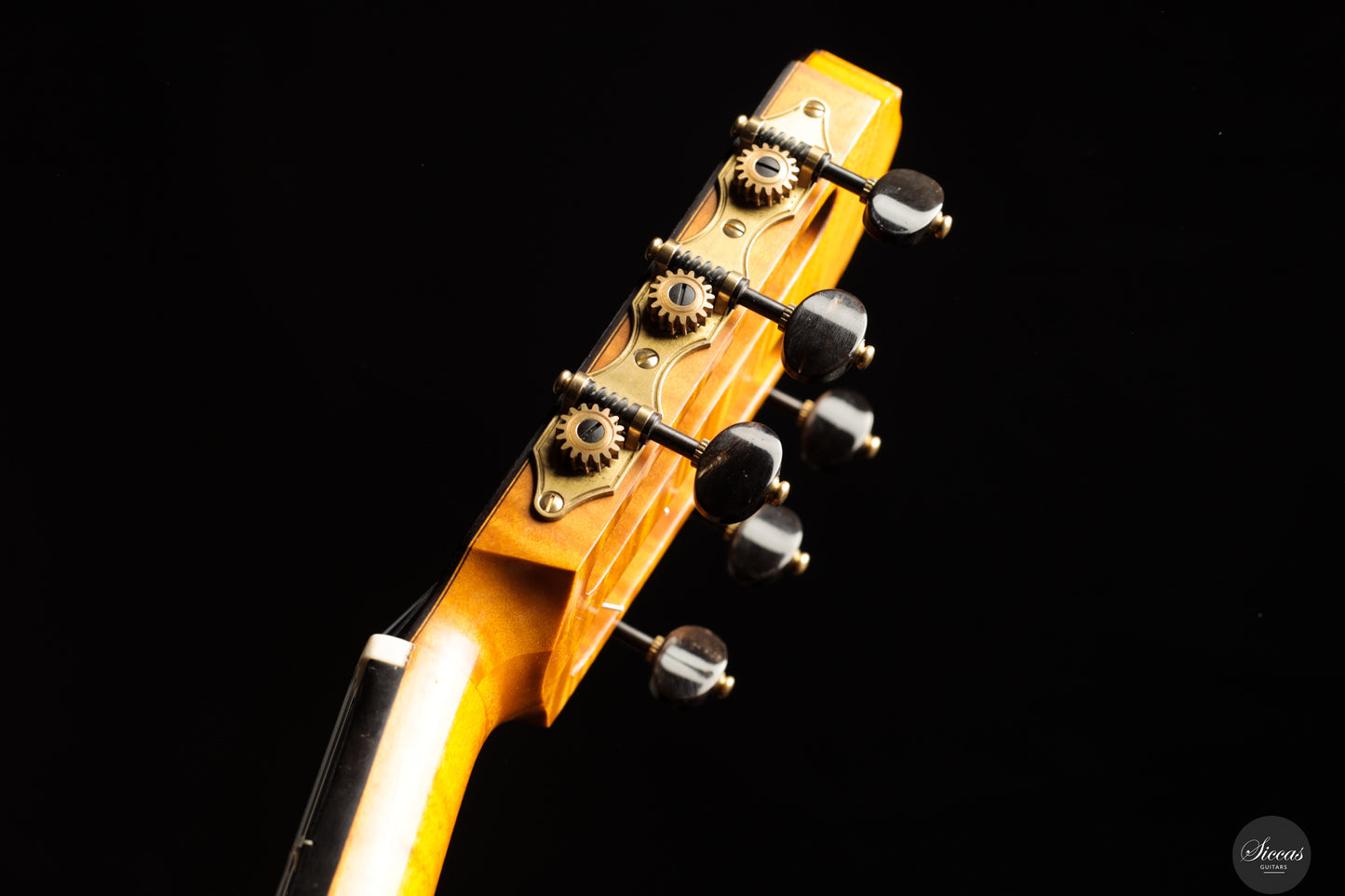
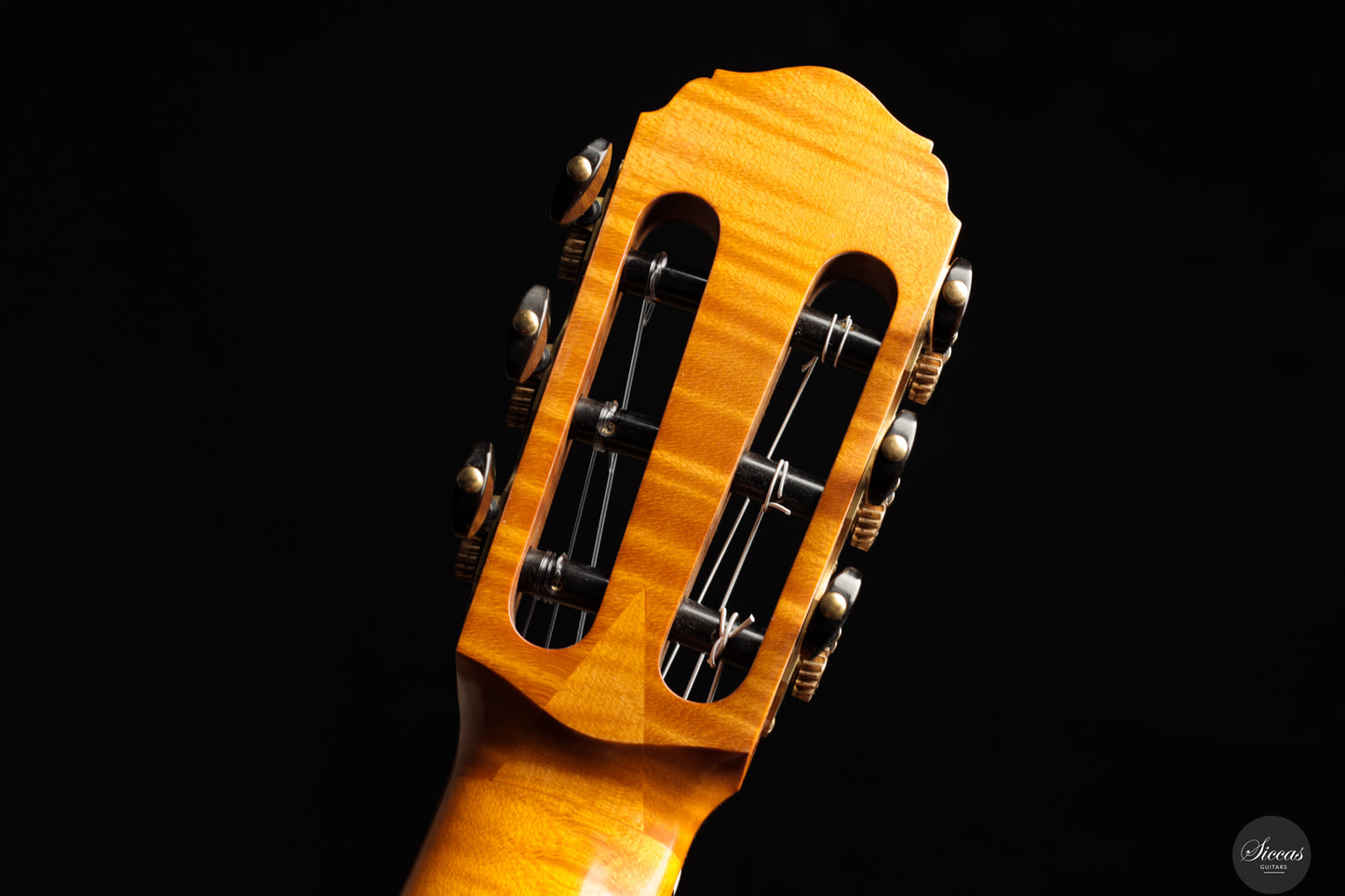
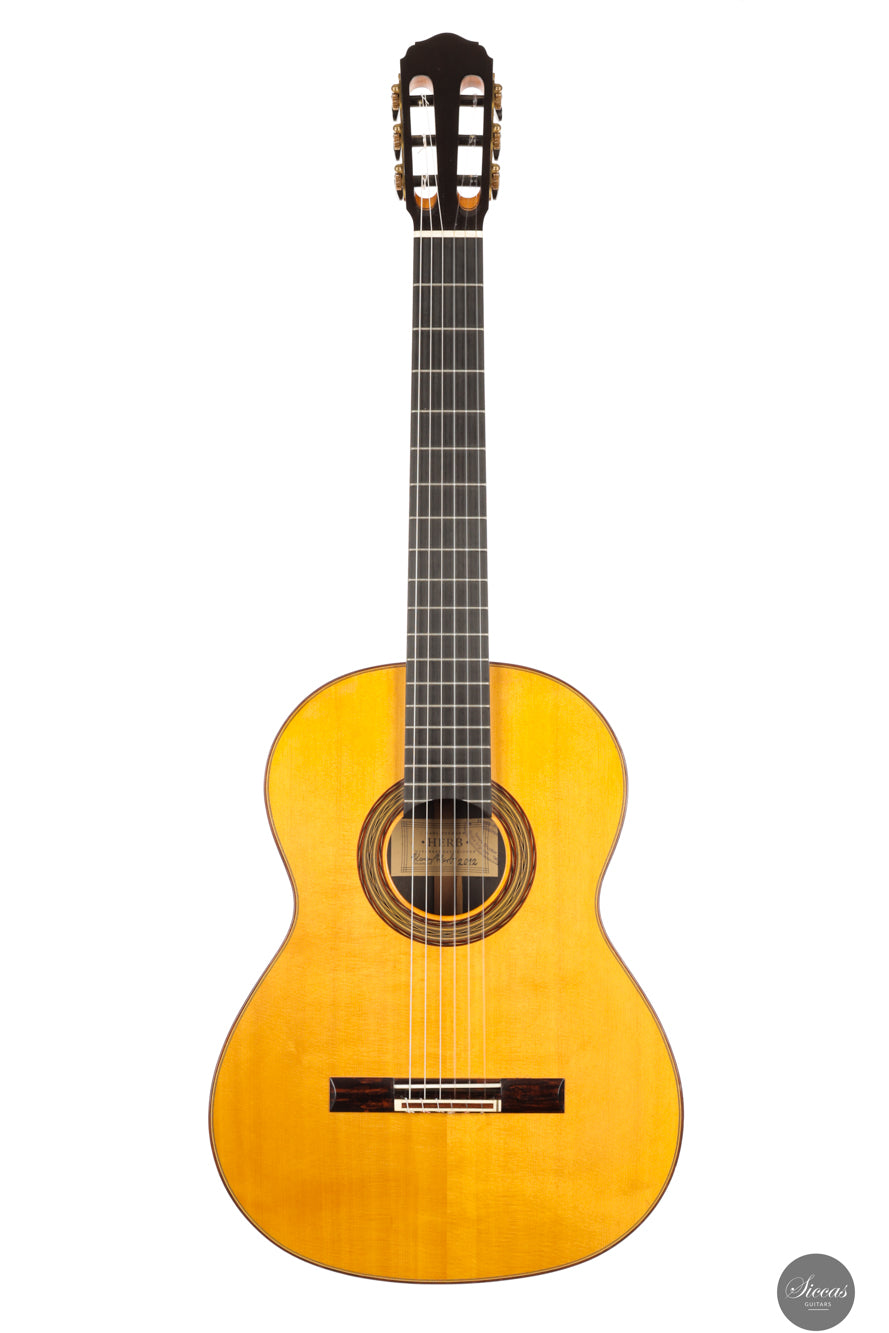
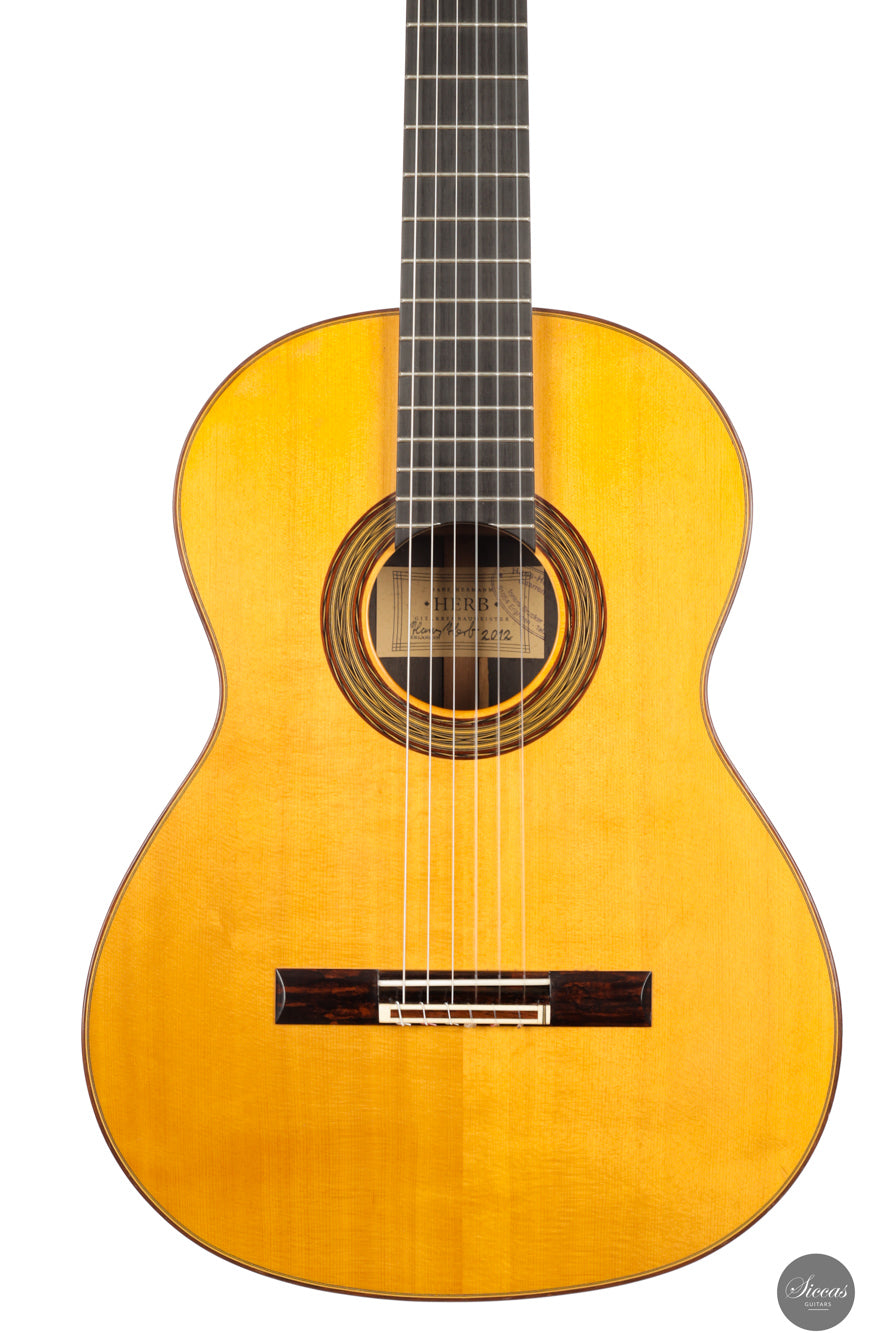
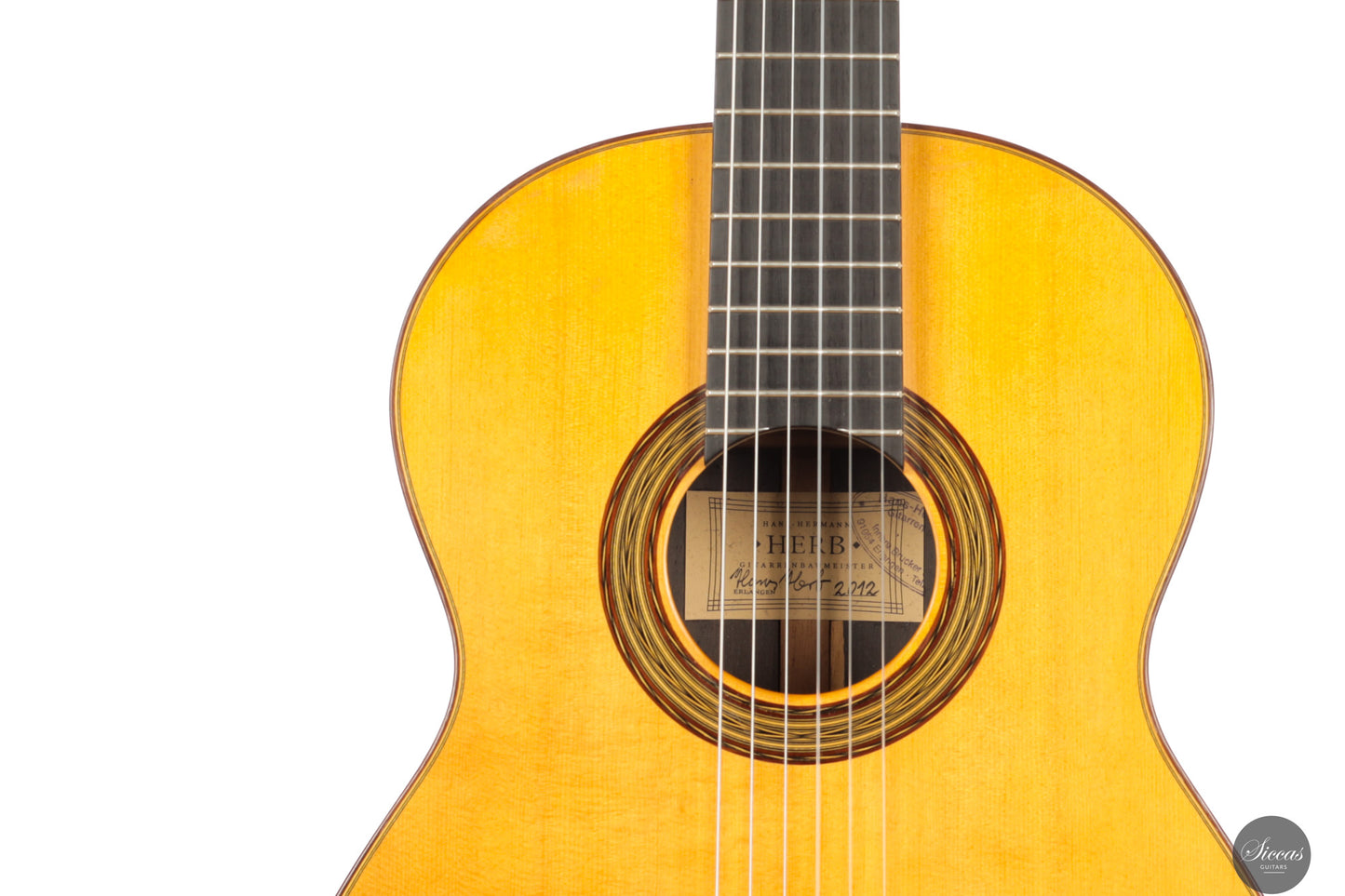
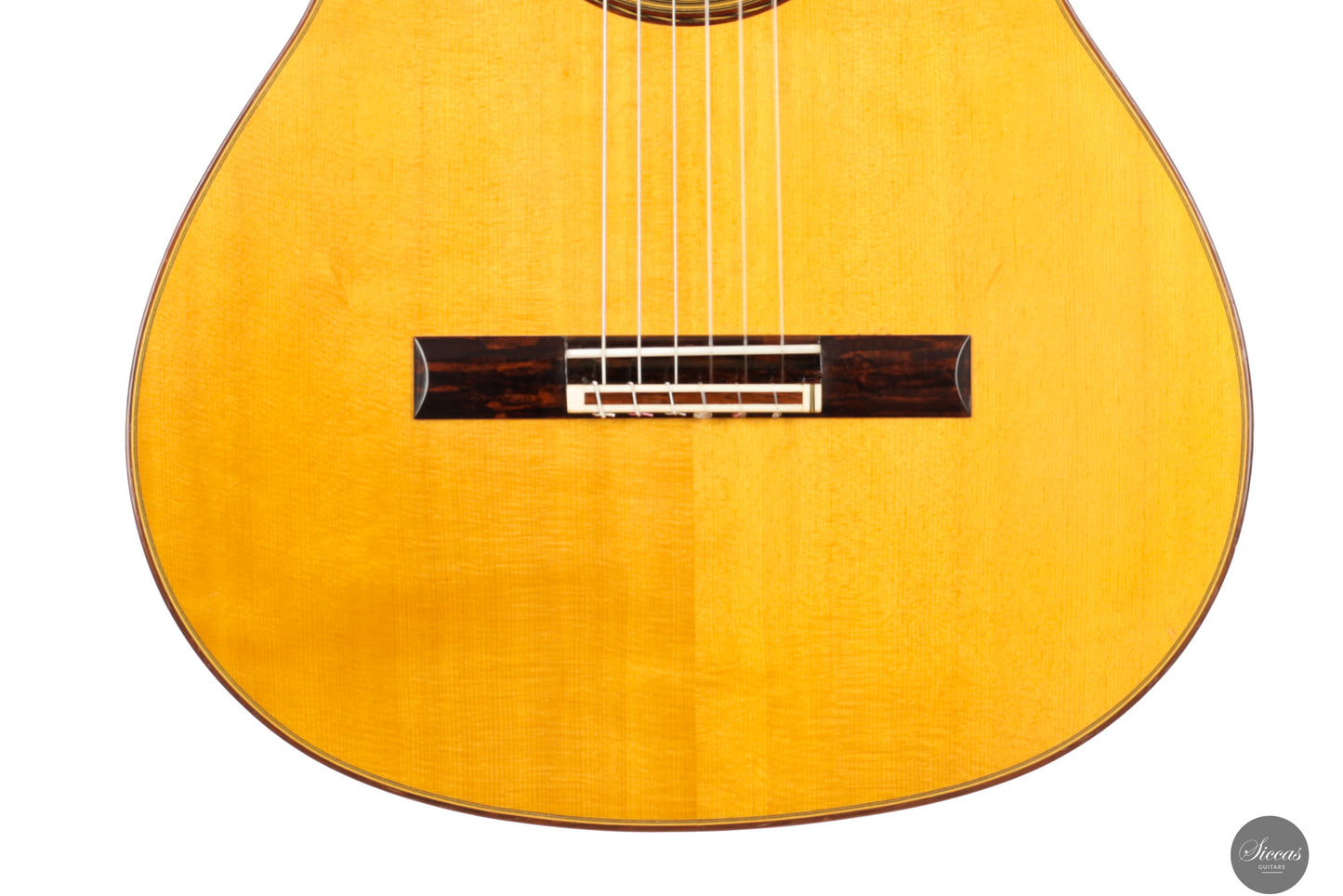
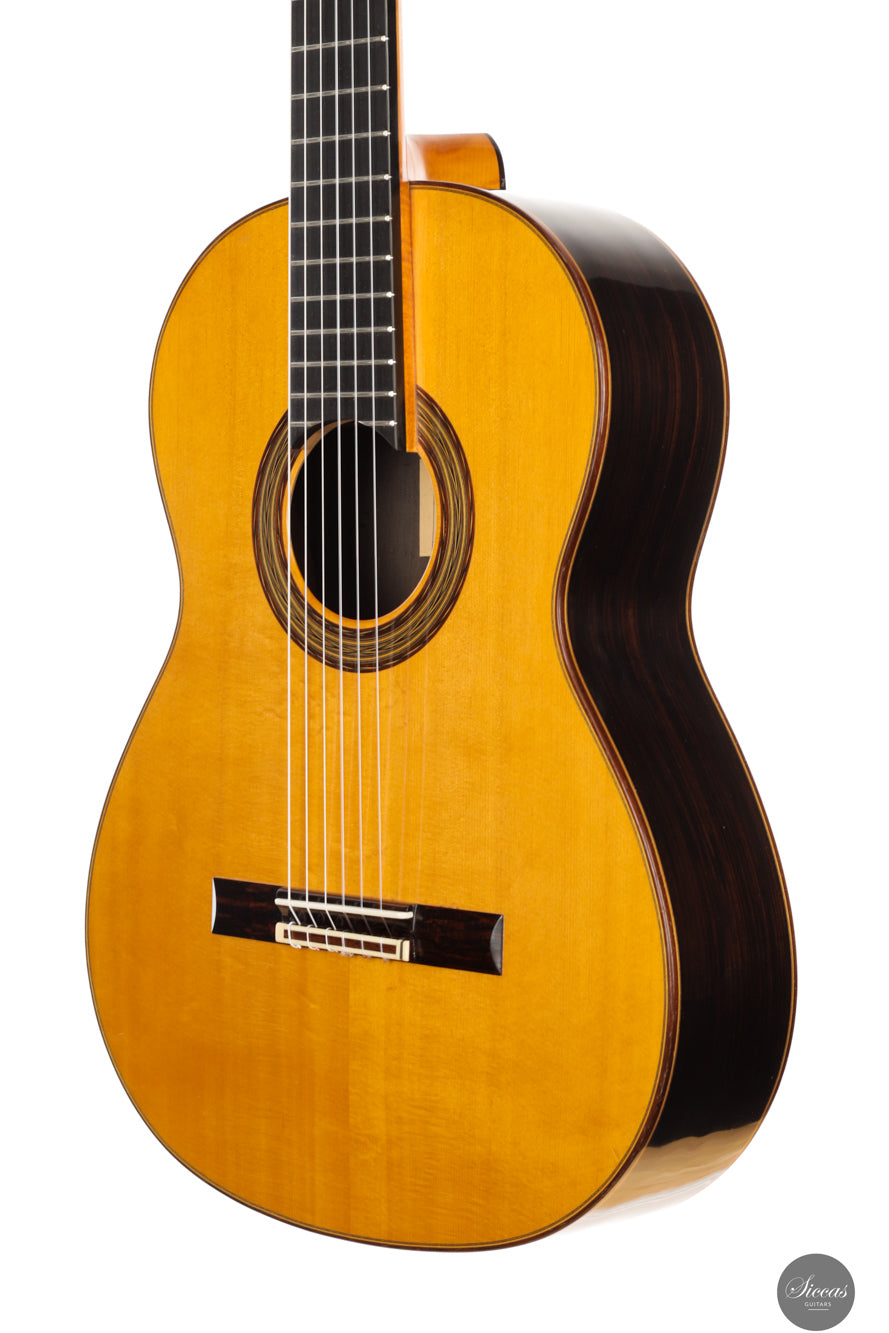
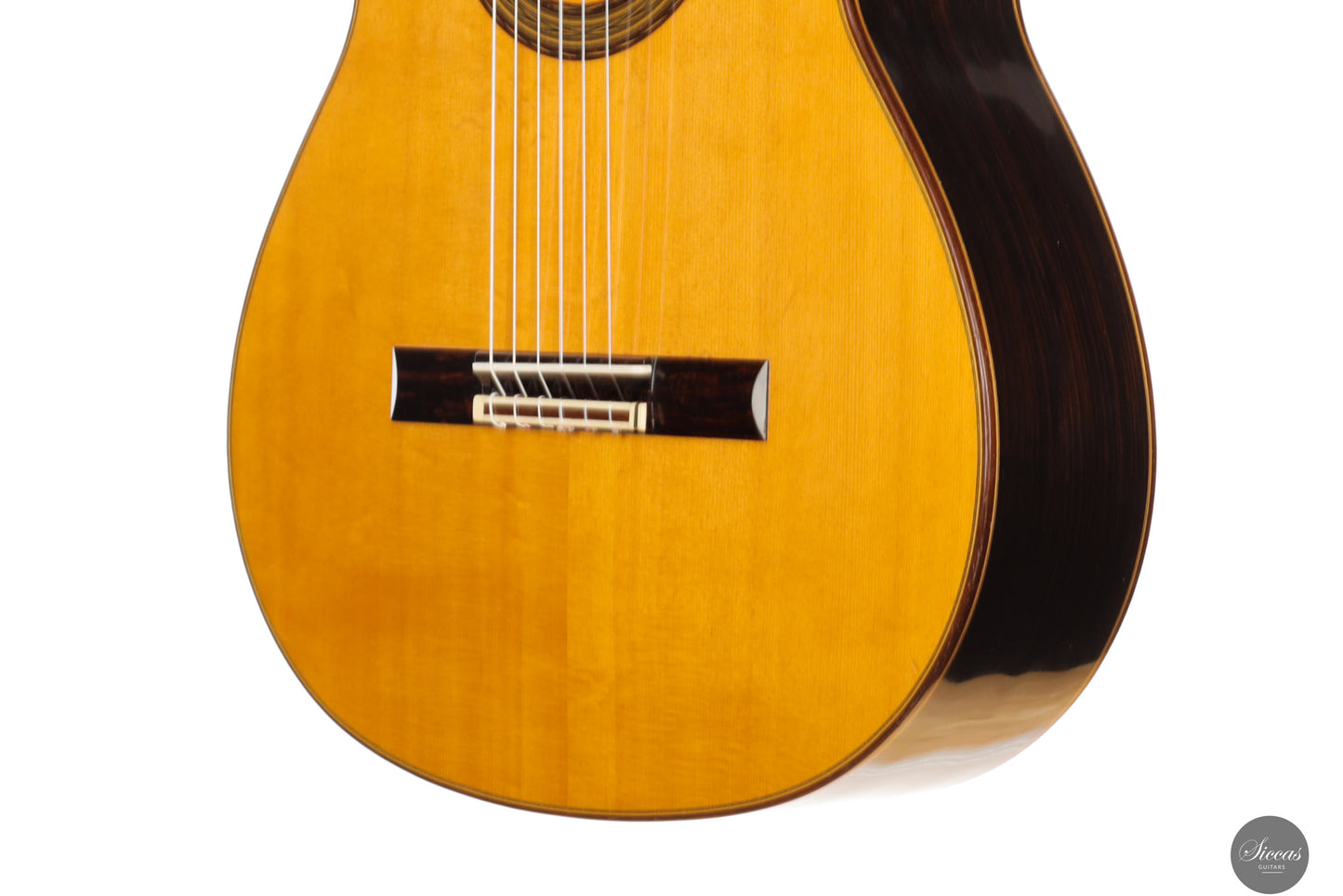
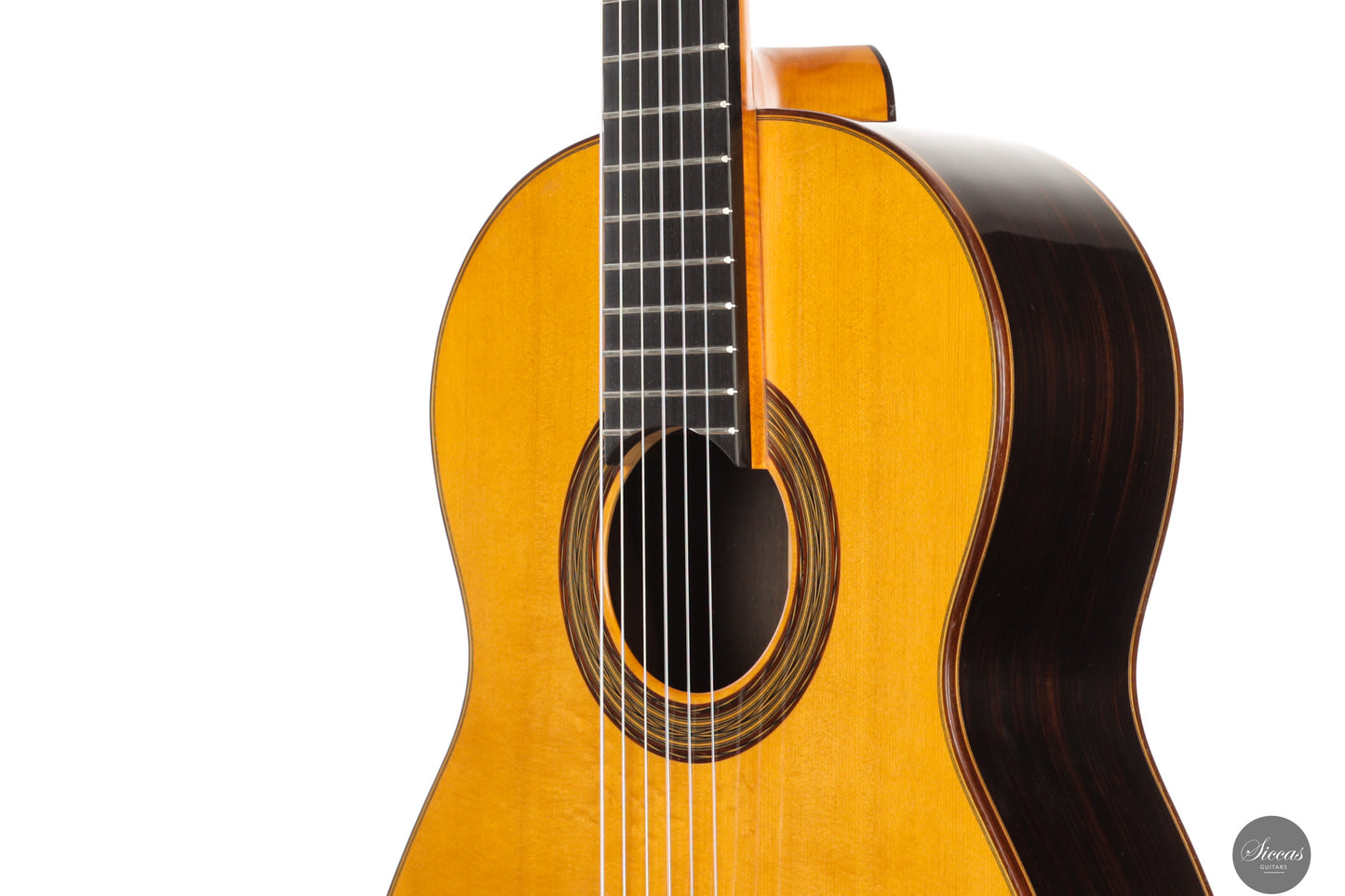
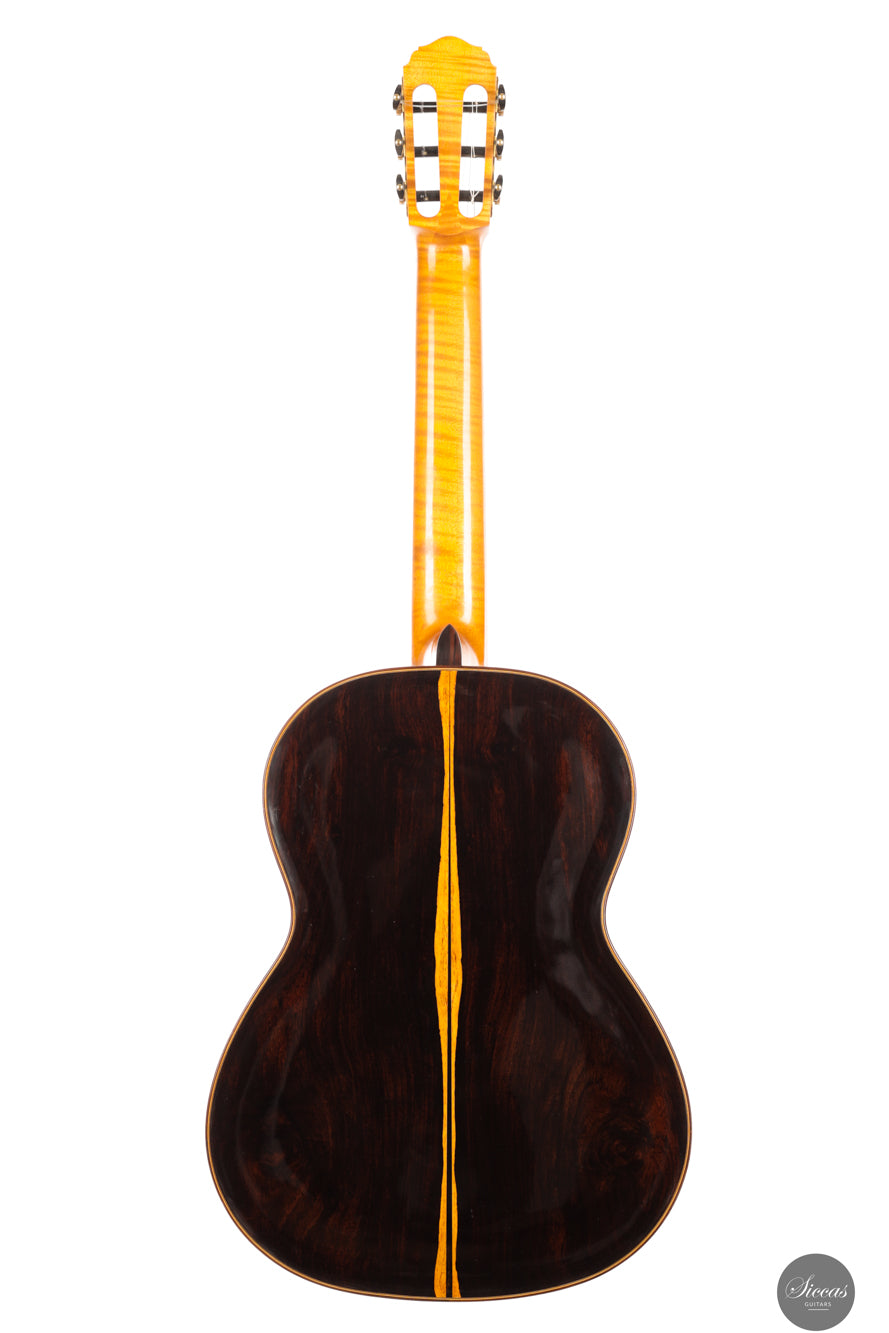
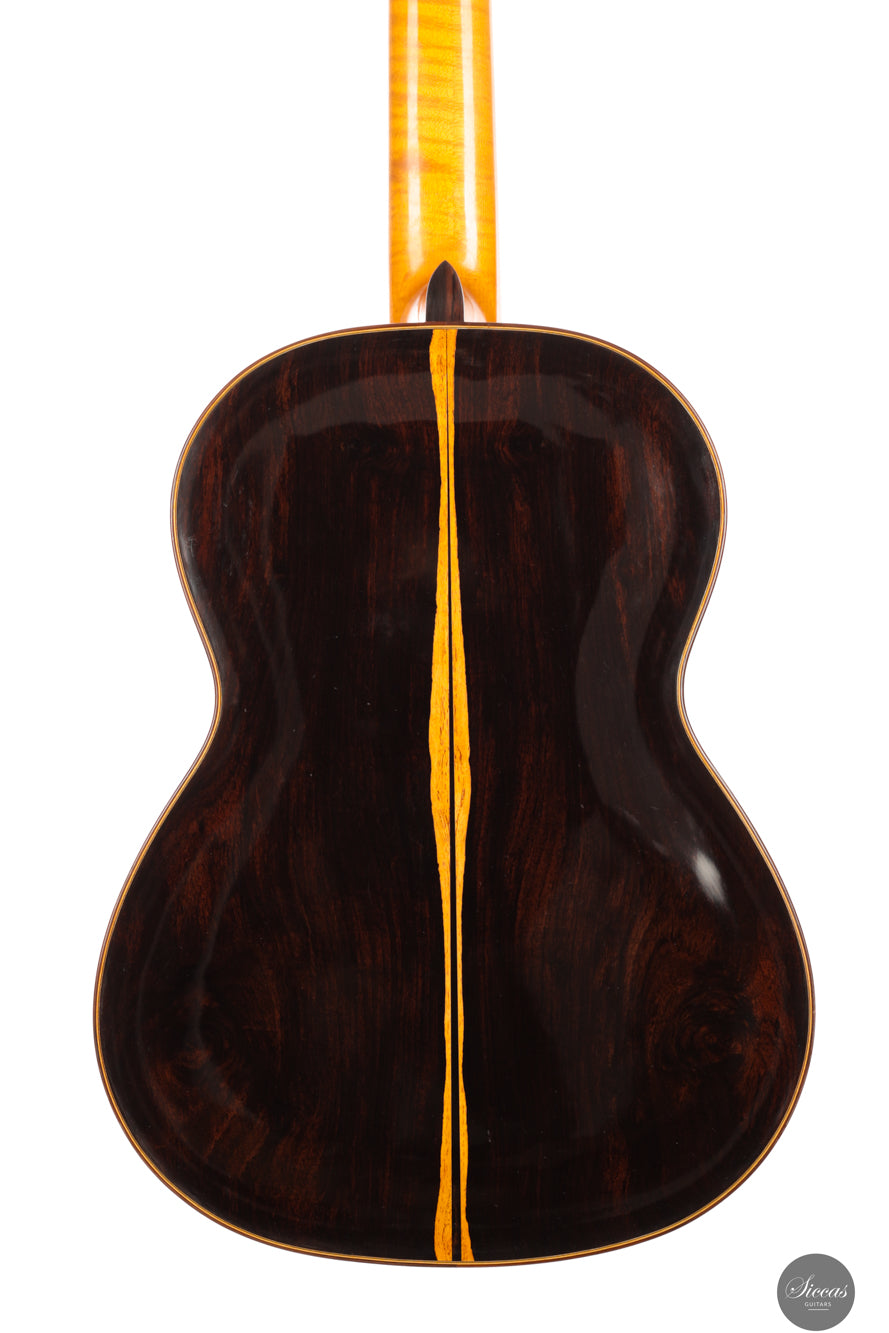
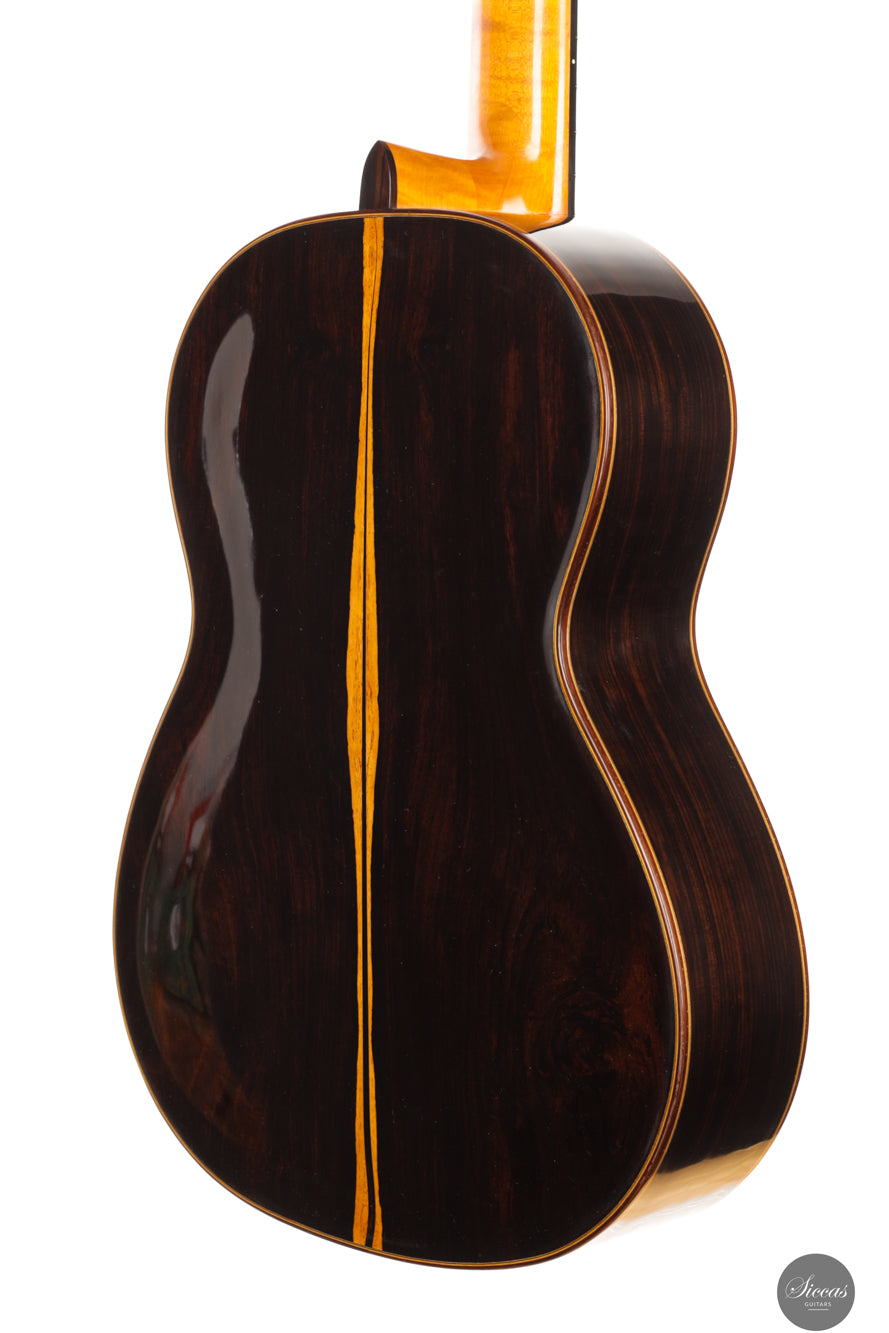
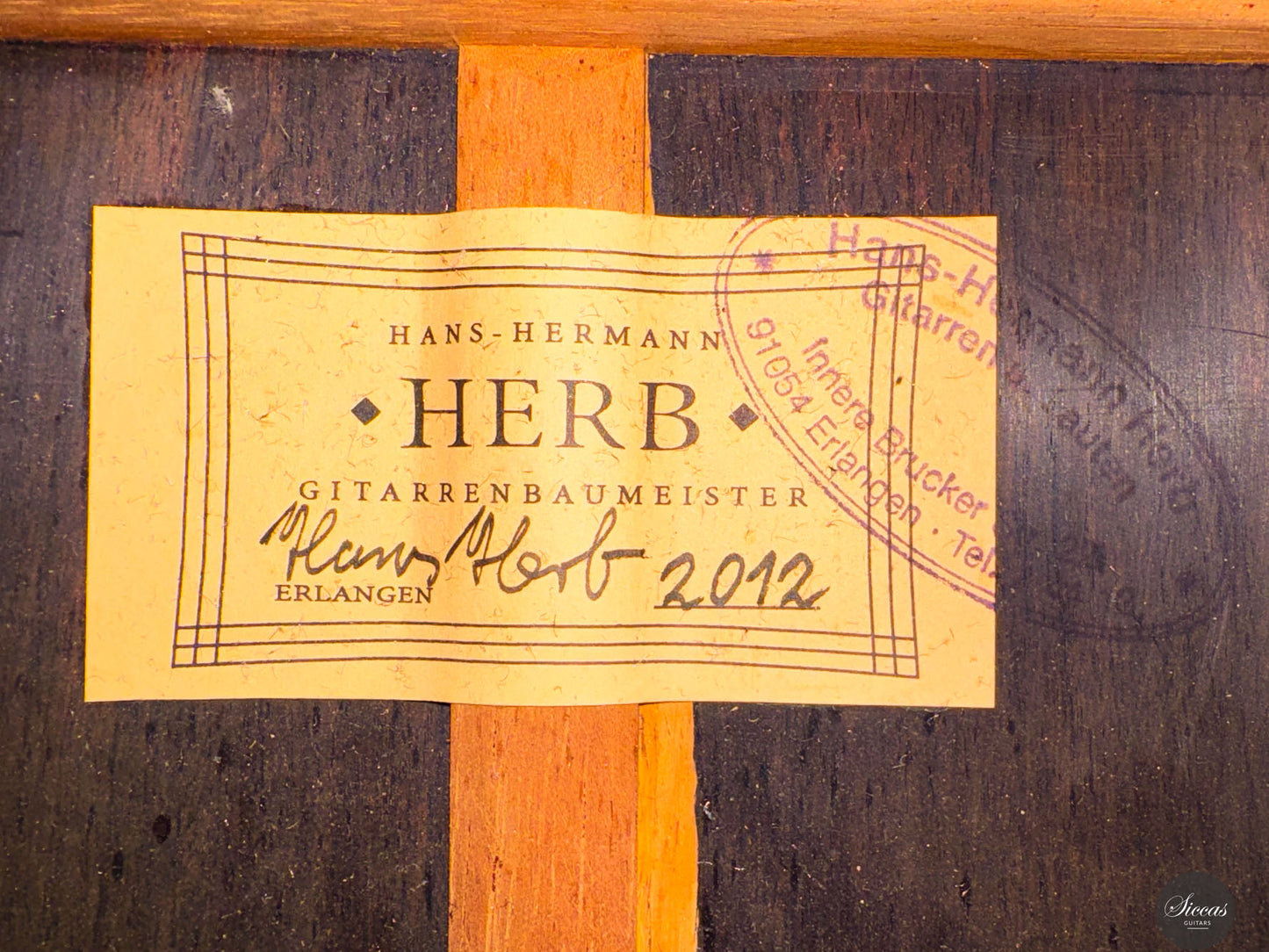
Video overview


More details about the guitar
About the luthier
Hans-Hermann Herb began his luthier training in 1965 and founded his workshop in Erlangen in 1972. Recognized as a freelance artist by the Academy of Fine Arts Nuremberg in 1983, his workshop was also designated a center of artistic craftsmanship. Now located in Bubenreuth and run in partnership with his son Alexander Herb, the Herb workshop has long been known for its handcrafted concert guitars, distinguished by their acoustical refinement and structural innovation.
About the guitar
This 2012 Master Edition 1A exemplifies Herb’s detailed approach to tone and structure. The guitar features a spruce top finished in French polish, with African blackwood for the back, carved for enhanced projection, and doubled sides lined with cypress. It has an elevated fingerboard for ease of play and Klaus Scheller tuning machines. The air body resonance lies between A♯ and B, suggesting a strong internal resonance ideal for lyrical phrasing. In tone, it is overtone-rich, with a slightly nasal, creamy character and a fast, full-spectrum response. The result is a concert guitar that feels immediate under the fingers, with a soft touch and strong presence, particularly well suited for fast-paced and expressive playing.
Condition
The instrument remains in excellent condition with no structural or aesthetic flaws noted. It is sold in a protective BAM case and strung with Knobloch EDC 34.0 strings.
Regular care extends the life of the instrument
Even with careful use, a classical guitar may gradually change in appearance or respond to unstable storage conditions. Have a close look at your guitar regularly and be attentif to changes. If your instrument is suffering from its environement, it will let you know.
Protect Your Guitar: Handle with Care
Be mindful when touching your instrument with greasy or unwashed hands: any skin contact is a small attack on the varnish. Of course, a guitar is made to be played, but taking a few precautions helps preserve its beauty: wash your hands before playing, wear long sleeves, and avoid unnecessary direct skin contact with the body of the instrument.
Pro tip: Avoid playing with a button-up shirt, heavy jewelry, or a belt, as these can scratch the guitar. Also, make sure your guitar case is free of any objects that could damage the instrument during storage.
String care
A good habit to adopt is wiping down your strings briefly after each playing session. This small action significantly extends their lifespan and helps maintain a consistent, comfortable feel under your fingers.
Most importantly, clean strings are essential for keeping your instrument in tune. Corrosion, sweat, and dust can affect the uniformity of the strings and interfere with accurate tuning across the entire fingerboard.
Pro tip: If you're having trouble getting your guitar in tune, it might be time to change the strings. A useful test is to compare the pitch of the 12th fret harmonic with the fretted note at the 12th fret; if there's an unusually large gap between them, your strings may have lost their integrity and should be replaced.
Keep Your Shellac Finish Shining!
Got a guitar with a shellac (French polish) finish? Here's a simple trick: Take a clean microfiber cloth and gently breathe on the surface to create a light mist. Then, softly rub to remove fingerprints, sweat, and grease. That’s usually all it takes to keep it looking great, no products needed!
Pro tip: Every few years, treat your guitar to a check-up with a luthier to keep it in top shape.
Storing Your Guitar: Climate Matters
Your guitar can safely stay outside its case, as long as the surrounding environment maintains 42–55% humidity and a temperature between 18–25°C.
Keep in mind that humidity levels can still fluctuate inside the case, especially during seasonal changes.
- Too much humidity may cause overtightened strings and a dull tone.
- Too little humidity can lead to a bulging top, string buzz, or even cracks.
Avoid placing your guitar near radiators, air conditioners, or windows with direct sunlight.
Pro tip: Always close your guitar case while playing. This helps preserve a stable microclimate inside the case, so your instrument is protected the moment you put it back in.





















































